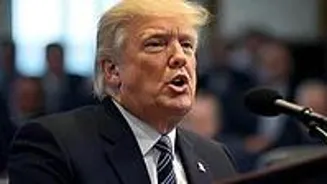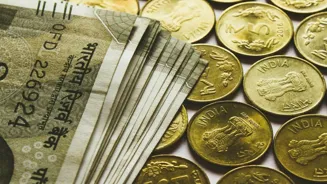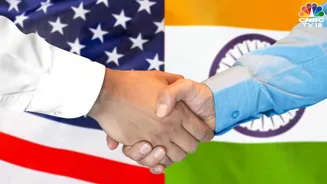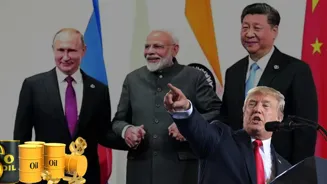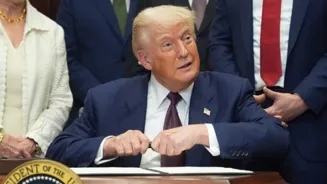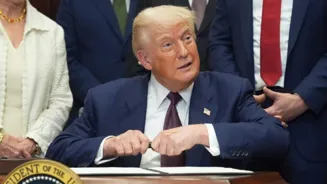Several of India’s major export sectors, including textiles, footwear, leather, chemicals, gems and jewellery, and seafood, are likely to suffer heavy
losses after the United States raised tariffs to 50% on Indian goods, industry experts said Wednesday. The move came after US President Donald Trump announced an additional 25% duty on Indian imports, citing New Delhi’s continued purchase of Russian oil. The new levy brings the total import duty on certain Indian goods in the US to 50%. Analysts said India appears to be the only major buyer of Russian oil penalised in this way, with countries such as China and Turkey so far escaping similar measures. “The tariffs are expected to make Indian goods far more expensive in the U.S., with the potential to cut exports by 40–50%,” said think tank Global Trade Research Initiative (GTRI). According to GTRI, some of the affected product categories will now face even steeper duties: organic chemicals (54%), knitted apparel (63.9%), woven apparel (60.3%), textiles and made-ups (59%), carpets (52.9%), gems and jewellery (52.1%), machinery (51.3%), and furniture and mattresses (52.3%). The first round of tariffs, announced on July 31, will take effect from August 7 (9:30 a.m. IST). The additional 25% will kick in on August 27, both levied on top of existing U.S. import duties. In the financial year 2024-25, India’s total trade with the U.S. stood at $131.8 billion, including $86.5 billion in exports and $45.3 billion in imports. The industries expected to bear the brunt include textiles and apparel ($10.3 billion), gems and jewellery ($12 billion), shrimp ($2.24 billion), leather and footwear ($1.18 billion), chemicals ($2.34 billion), and machinery and equipment ($9 billion). Seafood exporters said the new tariff would make Indian shrimp far less competitive in the U.S. market. “We’re already struggling to compete with Ecuador, which pays only 15% duty,” said Yogesh Gupta, MD of Megaa Moda, a seafood exporter based in Kolkata. “With anti-dumping and countervailing duties already in place, the total levy on Indian shrimp will rise to over 33% from August 7.” The Confederation of Indian Textile Industry (CITI) expressed “deep concern” over the development, noting that the U.S. is India’s largest market for textile and apparel exports. “This announcement is a major setback. We were already dealing with several headwinds, and this will further weaken our ability to compete with other exporting countries,” CITI said in a statement, urging the Indian government to step in with support measures. Colin Shah, MD of Kama Jewelry, said the move would affect nearly 55% of India’s exports to the US and create a 30–35% price disadvantage compared to countries with lower tariffs. “Buyers are putting orders on hold, and many MSME exporters won’t be able to absorb the cost hike. It could mean losing long-standing clients,” Shah warned. Industry groups and exporters are hoping for an early conclusion to a bilateral trade agreement between India and the US that is currently under negotiation. Officials said the two countries are targeting a preliminary deal by October or November but added there would be no concessions on sensitive sectors like agriculture, dairy, or genetically modified products. (With PTI inputs)






